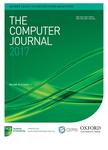版权所有:内蒙古大学图书馆 技术提供:维普资讯• 智图
内蒙古自治区呼和浩特市赛罕区大学西街235号 邮编: 010021

作者机构:Univ Extremadura Dept Comp & Commun Technol Caceres Spain Univ Nova Lisboa NOVA Informat Management Sch P-1200 Lisbon Portugal
出 版 物:《COMPUTER JOURNAL》 (计算机杂志)
年 卷 期:2016年第59卷第3期
页 面:384-402页
核心收录:
学科分类:08[工学] 0835[工学-软件工程] 0812[工学-计算机科学与技术(可授工学、理学学位)]
基 金:Spanish Ministry of Economy and Competitiveness European Regional Development Fund (ERDF) [TIN2012-30685] Fundacao para a Ciencia e a Tecnologia (FCT), Portugal [SFRH/BPD/100872/2014] Fundação para a Ciência e a Tecnologia [SFRH/BPD/100872/2014] Funding Source: FCT
主 题:computational science swarm intelligence multiobjective optimization Shuffle Frog Leaping Algorithm motif discovery problem
摘 要:The motif discovery problem (MDP) is an important biological optimization problem that has been addressed in numerous ways. However, it is important to note that when we address real complex optimization problems, we should adequately formulate them in order to provide real applicability to the developed techniques. In the particular case of MDP, as we do not know the size of the motifs and the number of repetitions that can be found in the sequences, we must not make any length or pattern-repetition assumptions. In addition, if we consider that it is practically impossible to adequately formulate an optimization problem with a single-objective function formulation, multiobjective optimization can be a good methodology to be considered. In this paper, we propose a novel hybrid multiobjective algorithm for tackling the MDP. Our main objective is to study the results achieved by our algorithm, analysing its performance when different motif occurrence models are considered. As we will see, experimental results on different sets of real instances will point out the advantages and disadvantages of each model, also checking how a more realistic definition of the optimized problem provides better quality biological results.